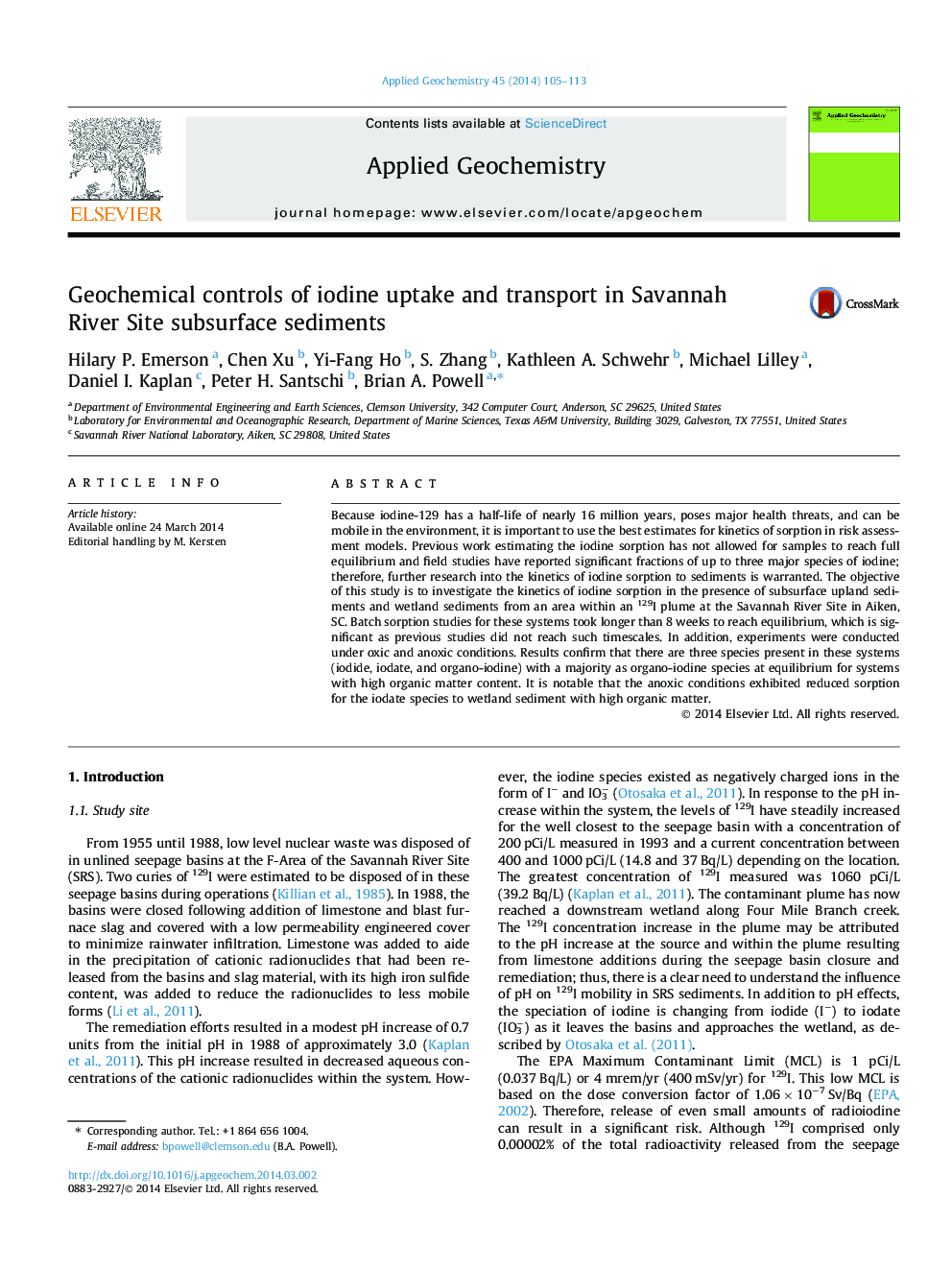| Article ID | Journal | Published Year | Pages | File Type |
|---|---|---|---|---|
| 4435837 | Applied Geochemistry | 2014 | 9 Pages |
•Decreased subsurface transport of iodine in the presence of natural organic matter.•Organo-iodine as the major equilibrium species in the presence of NOM.•Equilibrium sorption kinetics are independent of initial iodine species.•Organo-iodine sorbs significantly more strongly than iodide and iodate species.•Anoxic conditions decrease.
Because iodine-129 has a half-life of nearly 16 million years, poses major health threats, and can be mobile in the environment, it is important to use the best estimates for kinetics of sorption in risk assessment models. Previous work estimating the iodine sorption has not allowed for samples to reach full equilibrium and field studies have reported significant fractions of up to three major species of iodine; therefore, further research into the kinetics of iodine sorption to sediments is warranted. The objective of this study is to investigate the kinetics of iodine sorption in the presence of subsurface upland sediments and wetland sediments from an area within an 129I plume at the Savannah River Site in Aiken, SC. Batch sorption studies for these systems took longer than 8 weeks to reach equilibrium, which is significant as previous studies did not reach such timescales. In addition, experiments were conducted under oxic and anoxic conditions. Results confirm that there are three species present in these systems (iodide, iodate, and organo-iodine) with a majority as organo-iodine species at equilibrium for systems with high organic matter content. It is notable that the anoxic conditions exhibited reduced sorption for the iodate species to wetland sediment with high organic matter.
Graphical abstractFigure optionsDownload full-size imageDownload as PowerPoint slide
